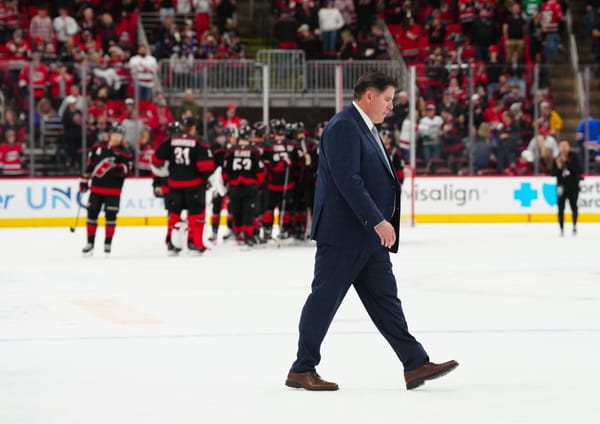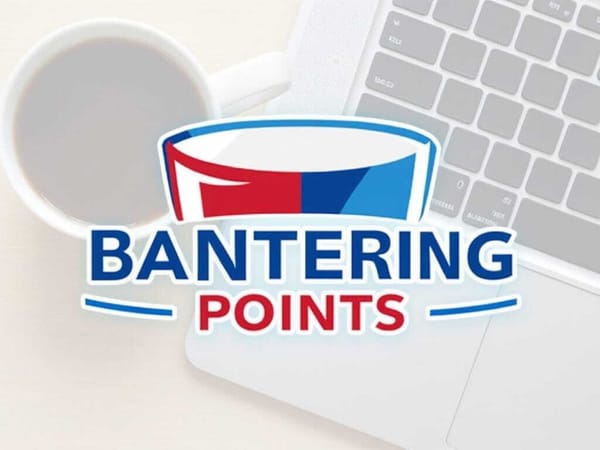What Is Jeff Gorton’s Plan, And How Can A Kevin Hayes Trade Help Us Understand It
As of this writing, General Manager Jeff Gorton has yet to make any real moves this year; aside from the Ryan Spooner trade that saved the Rangers from whatever embarrassing situation Edmonton decided to get themselves into post-acquisition.
The usual suspects have been rumored over and over again. Mats Zuccarello has a fair amount of linked suitors, as does Kevin Hayes, and we’ve reported interest in Vlad Namestnikov from Colorado.
The New York Rangers are lost. They’re a ship with a ripped sail; only moving in the direction they can propel themselves by rowing manually. That momentum isn’t slow enough for a top-three pick, but certainly isn’t fast enough to take them out of the top ten. That said, the current moment includes guys like Zuccarello and Hayes rowing, and they propel the ship forward a lot more than people might realize.
Currently constructed, the Rangers are a team with a respectable forward group, a declining but still quite respectable goalie, and a murderous defense that shreds most of anything good the other two parts of the team produce. It is the anchor that drags the ship down, and most of their struggles have to do with the quality of the player, not the way they’re being used.
Some of it is the team’s own doing. Neal Pionk- Marc Staal is an example of their own attempts at making things harder on themselves. As is Adam McQuaid’s permanent spot in the daily lineup. Some of it is the doing of the players off the ice, like Tony DeAngelo tanking his probably last shot at the NHL with more off ice “maturity” issues. Some of it is just genuine, no way around it, not good enoughitis. Pionk can’t outscore his issues in his own end and Brady Skjei’s struggles are bring in early returns of me look foolish for suggesting the risk was a smart one (disclaimer that things are fluid with this situation, of course). Kevin Shattenkik is here for two more years, and I’m not convinced the team is as high on Fredrick Claesson as they should be.
Optimistically, K’Andre Miller and Nils Lundkvist are two years away, and guys like Tarmo Reunanen project out to more of a number four guy than anything else. That’s not a bad thing, but it’s not an instant fix, either.
As things stand I really only see one path to the Rangers upgrading the defense overnight and it’s moving Chris Kreider to Winnipeg this summer for Jacob Trouba. Even so, it puts the Rangers in just a slightly better situation. The defense is still a disaster, but there’s a piece in it that can be relied on to be a true top-pair guy that you can build around.
Here’s where Hayes gets involved.
Of all the chips on Gorton’s table, it’s Hayes that represents the biggest return. Like Ryan McDonagh before him, Hayes is the piece that this year’s grade is really going to be focused on. Zuccarello and Vlad Namestnikov are nice pieces that should bring back a fine return, but Hayes is the needle mover, someone who can command a prospect damn near NHL readiness or an NHL ready guy right now.
The Rangers have taken an obvious focus on defense, both in the key returns they brought back from last year’s selloff and the draft in 2018 where they prioritized the back end of the ice from pick 22 on. That’s not a bad thing, but for a team that’s eyeing 2020 contention it’s not much of a help, either. Like pointed out above, the Rangers don’t have much of anything in the pipeline ready for next season. Libor Hajek and Ryan Lindgren are the closest things the Rangers have, but neither is having an outstanding rookie year in the AHL, and simply need more time to develop. Yegor Rykov kicked off this year’s KHL season struggling to find ice time on a loaded SKA team, but has eight points in 41 games for Sochi and has amasses some impressive play in Russia. That said, it’s a big transition from the KHL to North American hockey, and there’s no promises Rykov plays meaningful NHL minutes next season.
I’m spending so much time on the defense because that’s where the Rangers’ true issues lie. If Artemi Panarin is the team’s final destination this summer, or him and a coveted RFA (although we’ll need to dig deeper into that in another article) it makes the team better while still not making them good. Panarin is a superstar, and you take talent and skill where you can — especially someone at his level — but it just makes the team ... better. The same way that taping the passenger's side mirror back onto the car makes things better. It’s not a Ferrari but it’s better than it was.
Even adding Panarin and Trouba doesn’t do a hell of a lot to fix the team. Panarin would be an upgrade over Kreider, and Trouba is an upgrade over the charred remains of whatever the hell the Rangers threw out there on defense, but it’s still not a playoff team, and it’s nowhere near a contender. Add in an RFA forward as well (where compensation will likely be either four first round picks, or two firsts, a second, and a third for anyone meaningful) and you’re getting better but still not fixing the biggest issue.
Hayes is the only place this can change. If Gorton goes after an NHL-ready defenseman (please not Brandon Carlo) for Hayes, prioritizing that over picks and prospects, it might shed some light onto what the plan is. If Gorton gets back a younger NHL defenseman, it might be him trying to pair him with Trouba to at least have a sensible top four in place, which would help make the team better if adding Panarin and some RFA of note.
But again, this entire plan has a significant amount of “ifs” and “whens” in it.
The Rangers don’t know anything about this summer. They don’t know what Panarin really wants, they don’t know what RFAs will even be available to be spoken to, and they don’t know if they will be a position to give an offer sheet that moves the needle enough to be signed and force the other team’s hand to be unable to match. Gorton could, and even might, have an idea of Trouba’s availability and if Kreider would be enough to get him, but even that has the chance of changing once the season ends and everyone is re-investing into next year.
Here’s what the Rangers know:
1) The defense is a disaster.
2) Fixing the defense isn’t something that can be done overnight, and even in the most optimistic of scenarios it will require creating holes in other places that will need to be filled.
3) The only thing Gorton can control is who he trades and what he’s asking for, and even then the return for said assets is up to the market.
The team is where it is right now. We’ll have an idea of what it looks like once the dust settles after the trade deadline.
And once Hayes is moved, we’ll have a good idea of what plans Gorton has in his head.





